The non-contact design of the digital water level meter avoids water quality interference, corrosion, wear, and installation restrictions. It has a wide measurement range, high accuracy, small error, and adapts to complex environments. It is a high-performance and high-reliability measurement device.
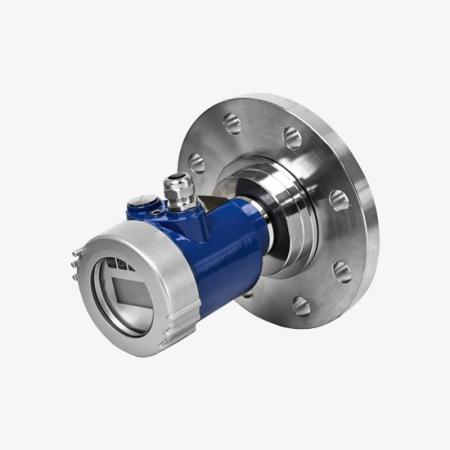
High-precision Measurement and Extreme Environment Adaptability
- The digital liquid level indicator has an 80GHz high-strength penetration rate and 120m wide range, enabling the water level meter to achieve breakthroughs in three aspects: "high-precision measurement, ultra-long-distance coverage, and extreme environment adaptation".
- By transmitting microwave signals and receiving the reflected echo from the water surface, high-precision water level measurement is achieved by accurately calculating the echo time. The measurement error is small, and the response speed is fast. It can obtain water level data in real time, continuously, and accurately.
- Non-contact measurement is the core highlight of the radar water level meter. The equipment does not need to be in direct contact with the water body, which not only avoids the equipment from being impacted and corroded by the water flow, but also prevents the entanglement of mud, sand, and aquatic plants from affecting the measurement, greatly extending the service life.
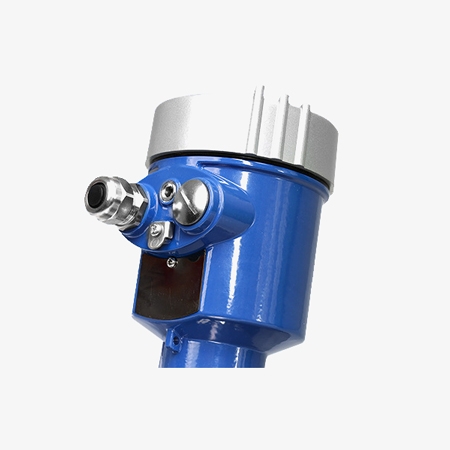
Long-distance Monitoring helps Water Management
- The digital water tank level gauge is easy to install, just fix the equipment in a suitable position, complete simple debugging, and put it into use, greatly reducing the difficulty and cost of construction.
- The radar flowmeter has strong environmental adaptability, whether it is severe cold and heat, rainstorms and floods, or high corrosion, high dust, and other harsh scenes, it can operate stably without frequent maintenance.
- The measurement distance of the radar water level meter can reach tens of meters or even hundreds of meters, which is suitable for large-area water monitoring such as large reservoirs and rivers. This long-distance measurement capability makes it play an important role in water resource management and flood warning.
Applications
The use scenarios of water level meters cover multiple fields such as industry, water conservancy, environmental protection, and energy. Its applications are diversified according to the characteristics of the measuring medium, environmental requirements, and functional requirements.
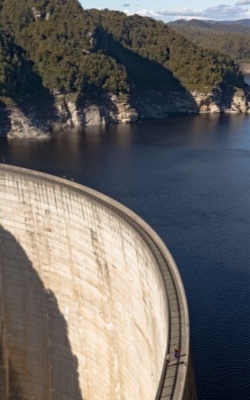
Dam

Hydroelectric Power Station

Water Tank
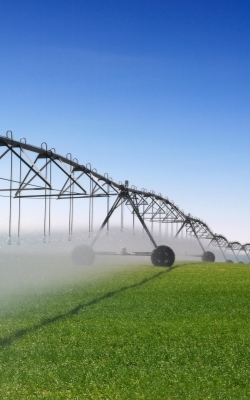
Agricultural Irrigation
| Model | SISCO-WLM-GSSM0380G |
| Style | Stainless steel threaded 1.5 inch/ PTFE lens flange conventional |
| Frequency Range | 76~81GHZ |
| Application Range | High temperature environment, highly corrosive liquid, stirring, and water vapor condensation. |
| Measurement Range | 0~35m |
| Process Connection | Bracket, Flange |
| Medium Temperature | -40~120℃ |
| Process Pressure | -0.1~4Mpa |
| Measurement Accuracy | ±1mm |
| Protection Level | IP65 |
| Emission Angle | ≤3° |
| Explosion-proof Level | Exia II CT6 Ga |
| Housing Material | Cast aluminum/Stainless steel |
| Signal Output | 4~20mA/HART (2-wire/4-wire)RS485/Bluetooth |
Structure diagram

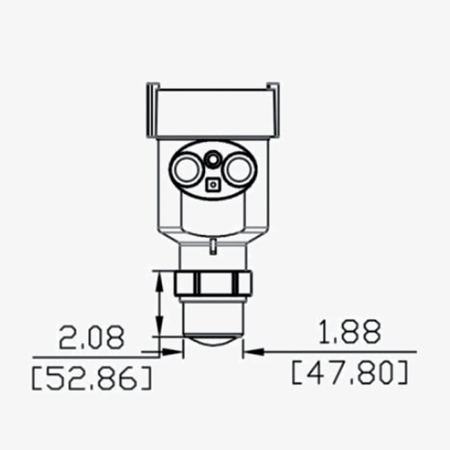
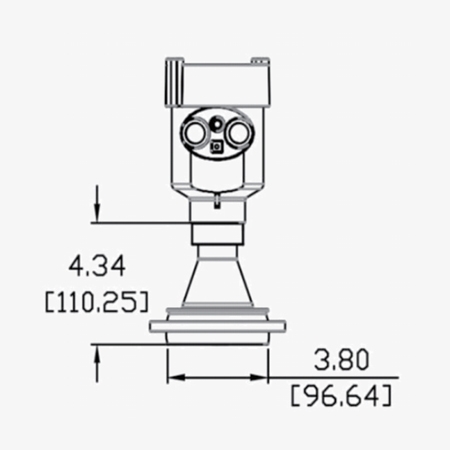
Q1: How to Read a Water Level Gauge Correctly?
A1: The key to reading a water level gauge correctly is to first check the device status and environmental conditions to ensure there are no interference factors, then use the corresponding method according to its type (such as glass tube, float type, pressure type or radar/ultrasonic) to read it, usually by looking directly or viewing the display, paying attention to the units and decimal points; at the same time, make sure the device is calibrated, and pay attention to factors such as bubbles and dirt that may affect the accuracy of the reading. Finally, record the reading and do daily cleaning and maintenance to ensure the reliability of the measurement results and the life of the equipment.
Q2: How to Calibrate a Water Level Meter?
A2: The water level meter calibration needs to be completed in a static water body. First, place the probe into a known depth (such as 0cm or standard water level) to adjust the zero point, then calibrate the range by comparing the actual water depth, and set compensation parameters according to the water temperature to eliminate thermal expansion and contraction errors. After completion, record the calibration data and recheck it regularly (such as monthly) to ensure measurement accuracy.
Q3: Common Operational Errors When Using Water Level Meters
A3: Common operational errors when using water level meters include improper installation, neglect of calibration, and neglect of environmental factors. For example, when installing the probe tilted or close to the inlet/outlet, the measured value may be too large or too small, or even fluctuate unstably; failure to perform zero point calibration or neglecting that the medium density does not match the device setting value may cause inaccurate readings.
Tips: The Core Advantage of Digital Water Level Meter with Dadar Function.
The core advantage of the radar water level meter is its non-contact measurement capability. It measures water level through the principle of radar wave reflection, avoiding sensor pollution and corrosion caused by direct contact with water. In addition, it also has the characteristics of high accuracy (usually up to millimeter level), stable and reliable measurement, simple maintenance (no need to clean or replace sensors regularly), wide application range (suitable for rivers, lakes, reservoirs, and other water environments,) and strong anti-interference ability.
Thank you for buying industrial test and measurement equipment on SISCO.com, all products sold by SISCO and the partner cover a 12 months warranty, effective from the date of receiving the products.
What is covered?
SISCO is responsible for providing free spare parts, and free technical support to assist the customer to repair the defective products until the problem is solved.
What is not covered?
- Product purchased from anyone other than a SISCO store or a SISCO authorized reseller.
- Expendable parts.
- Routine cleaning or normal cosmetic and mechanical wear.
- Damage from misuse, abuse or neglect.
- Damage from use of parts other than SISCO approved.
- Damage from use outside the product’s usage or storage parameters.
- Damage from use of parts not sold by SISCO.
- Damage from modification or incorporation into other products.
- Damage from repair or replacement of warranted parts by a service provider other than a SISCO authorized service provider.
- Damage caused by the application environment not meeting the product usage requirements and the failure to perform preventive maintenance.

